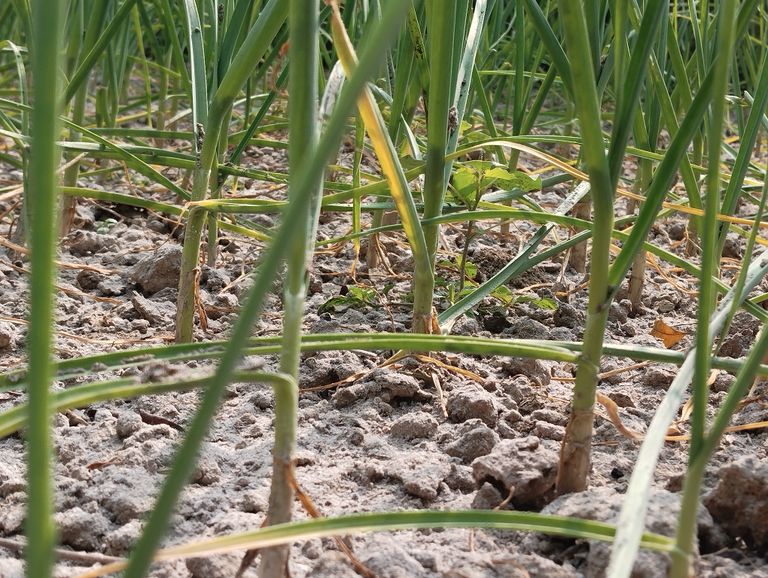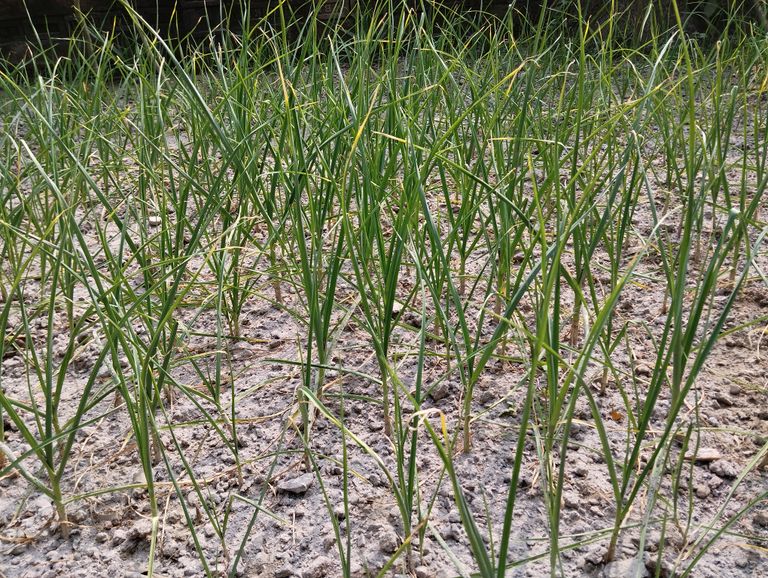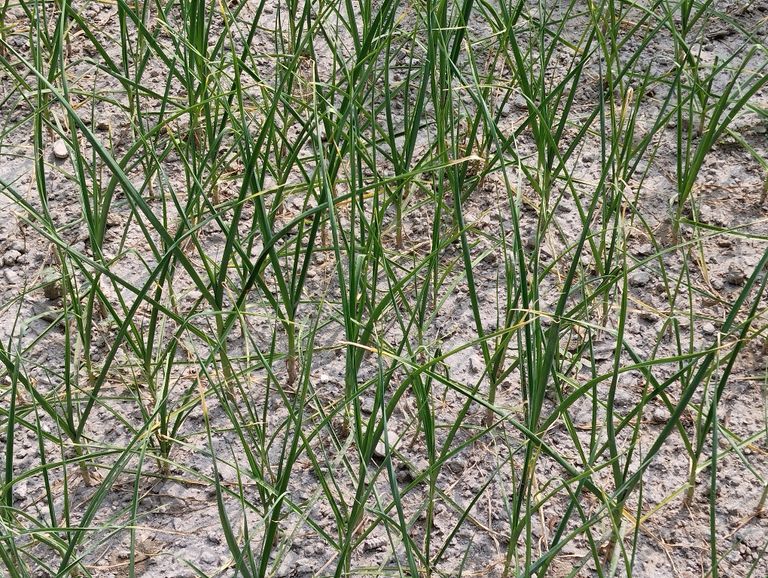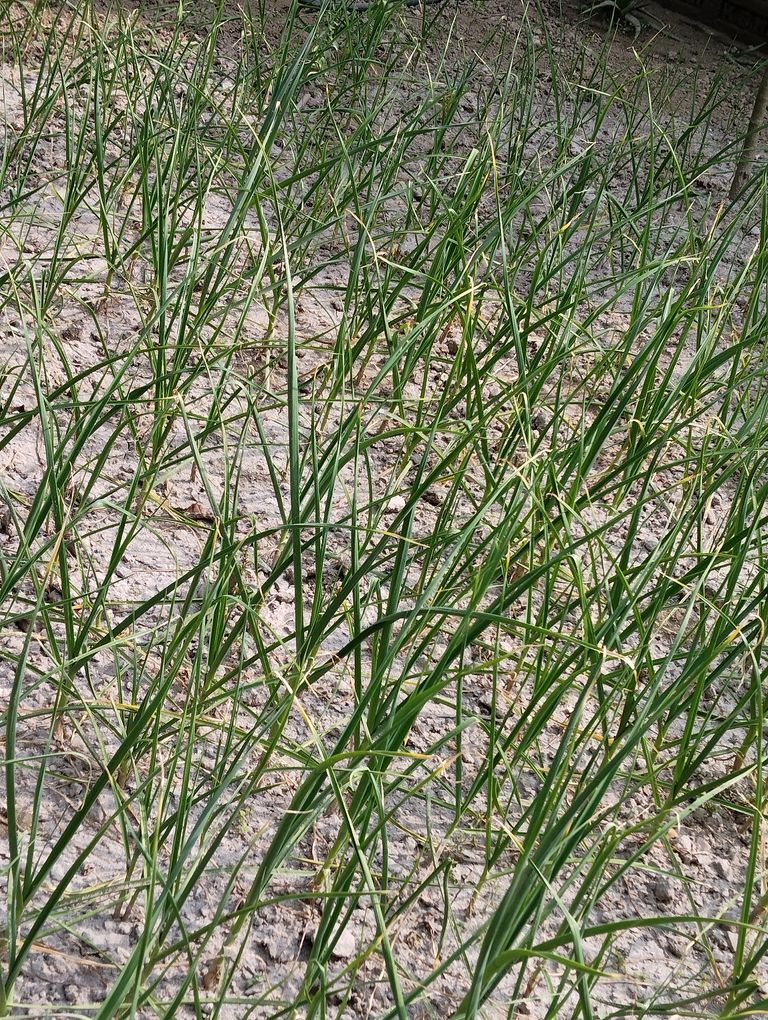
Onion Seedling Planting A Comprehensive Guide.
Onion cultivation is an essential agricultural activity across the globe due to the high demand for onions in cooking and food processing. Planting onion seedlings correctly is critical to achieving a healthy, productive crop. This blog provides a step-by-step guide to planting onion seedlings, ensuring optimal growth and yield.
Understanding Onion Cultivation
Onions are a cool-season crop, thriving in mild temperatures. They belong to the Allium family, which includes garlic, leeks, and shallots. Onions can be grown from seeds, sets, or transplants, but in this guide, we focus on planting onion seedlings.
Preparing for Onion Seedling Planting
- Selecting the Right Variety
Choose the onion variety based on your region's climate and the desired type of onion (red, white, or yellow). Varieties can be classified into:
Short-day onions: Ideal for warm climates, requiring 10–12 hours of daylight.
Long-day onions: Suitable for cooler climates, needing 14–16 hours of daylight.
Day-neutral onions: Adaptable to most regions, requiring 12–14 hours of daylight.
- Soil Preparation
Onions grow best in well-drained, fertile soil with a pH range of 6.0–7.0. Here's how to prepare the soil:
Loosen the soil: Use a tiller or spade to a depth of 8–12 inches.
Incorporate organic matter: Add compost or well-rotted manure to enrich the soil.
Check drainage: Ensure the soil is not waterlogged, as onions dislike standing water.
- Seedling Preparation
Onion seedlings are typically grown indoors or in a nursery for 6–8 weeks before transplanting. Ensure the seedlings are:
4–6 inches tall and have healthy green tops.
Hardened off by exposing them to outdoor conditions for 7–10 days before transplanting.
Planting Onion Seedlings
- Timing
Plant onion seedlings in early spring for most varieties or in late fall for mild winter regions. The soil temperature should be at least 50°F (10°C).
- Spacing
Proper spacing is vital for onion bulb development.
Rows: Space rows 12–18 inches apart.
Seedlings: Plant seedlings 4–6 inches apart within the rows.
- Planting Technique
Create shallow trenches about 1 inch deep.
Place each seedling upright in the trench.
Cover the roots and base with soil, ensuring the bulb portion is not buried too deeply.
Caring for Onion Plants
- Watering
Onions require consistent moisture, especially during bulb formation.
Water deeply once a week, ensuring 1–2 inches of water per week.
Avoid overwatering to prevent root rot.
- Fertilizing
Apply a nitrogen-rich fertilizer 2–3 weeks after planting.
Side-dress with fertilizer every 3–4 weeks until bulb formation begins.
- Weeding
Keep the field weed-free to minimize competition for nutrients and water. Use mulch to suppress weed growth and retain soil moisture.
- Pest and Disease Control
Common pests: Onion maggots, thrips, and aphids. Use organic or chemical control measures as needed.
Diseases: Monitor for fungal diseases like downy mildew and treat promptly.
Harvesting Onions
- When to Harvest
Onions are ready for harvest when:
The tops turn yellow and start to fall over.
The bulbs reach the desired size.
- How to Harvest
Gently lift the bulbs using a garden fork.
Shake off excess soil and leave the bulbs to dry in a shaded, well-ventilated area for 2–3 weeks.
- Storage
Cure the onions until the outer skins are dry. Store them in a cool, dry place with good airflow to extend their shelf life.
Key Tips for Success
Use disease-free seedlings to prevent crop loss.
Avoid planting onions in the same spot consecutively to reduce soil-borne diseases.
Monitor weather conditions and protect seedlings from frost or extreme heat.
Planting onion seedlings is a straightforward process that, when done correctly, can result in a bountiful harvest. By following the steps outlined above and giving your crop the care it needs, you’ll enjoy a successful onion-growing season. Whether for home use or commercial purposes, onions are a rewarding crop to cultivate.

The Health Benefits of Raw Onions: A Comprehensive Guide
Raw onions are a staple in many cuisines around the world, known for their pungent flavor and crunchy texture. However, beyond their culinary uses, raw onions are a powerhouse of nutrients that offer numerous health benefits. In this article, we explore the remarkable ways raw onions contribute to our well-being.
- Rich Source of Nutrients
Raw onions are packed with essential nutrients, including:
Vitamins: Onions are an excellent source of Vitamin C, which boosts immunity and acts as a potent antioxidant. They also contain small amounts of vitamins B6 and folate.
Minerals: Onions provide minerals like potassium, magnesium, and calcium, which are essential for bone health and maintaining fluid balance in the body.
Fiber: A good amount of dietary fiber in onions aids digestion and promotes gut health.
- Boosts Immunity
Onions are loaded with antioxidants, particularly quercetin and sulfur compounds, which strengthen the immune system. Quercetin helps reduce inflammation and protects the body from free radical damage, lowering the risk of chronic diseases.
- Promotes Heart Health
Regular consumption of raw onions can significantly benefit heart health by:
Lowering blood pressure due to their sulfur compounds.
Reducing cholesterol levels by promoting the production of "good" HDL cholesterol.
Preventing blood clots, thereby reducing the risk of heart attack and stroke.
- Controls Blood Sugar Levels
Raw onions contain compounds like chromium and sulfur that improve insulin sensitivity and help regulate blood sugar levels. This makes them particularly beneficial for people with diabetes or those at risk of developing the condition.
- Improves Digestive Health
Onions are rich in prebiotics, a type of dietary fiber that feeds the beneficial bacteria in your gut. A healthy gut microbiome improves digestion, enhances nutrient absorption, and strengthens the immune system.
- Fights Infections
The antimicrobial properties of onions can combat a range of bacteria and fungi. Consuming raw onions regularly can help prevent infections and promote faster recovery from common illnesses like colds and flu.
- Supports Bone Health
Onions contain compounds that enhance bone density and reduce the risk of fractures, especially in postmenopausal women. Their high calcium content also contributes to stronger bones.
- Improves Skin and Hair Health
The antioxidants in onions protect the skin from premature aging and help maintain its elasticity. Sulfur compounds in onions promote collagen production, keeping the skin healthy and glowing. Additionally, applying onion juice to the scalp can stimulate hair growth and reduce dandruff.
- Helps in Detoxification
Onions are natural detoxifiers, aiding the liver in flushing out toxins. The sulfur compounds also enhance the production of glutathione, a powerful antioxidant that supports liver health.
- May Reduce Cancer Risk
Studies have shown that regular consumption of raw onions is associated with a reduced risk of certain cancers, such as stomach and colorectal cancers. The sulfur compounds and antioxidants in onions inhibit the growth of cancer cells and prevent tumor formation.
How to Include Raw Onions in Your Diet
Add thinly sliced onions to salads for a refreshing crunch.
Use them as a topping for sandwiches, burgers, or tacos.
Mix finely chopped onions into dips and salsas.
Pair raw onions with cucumbers and tomatoes for a quick and nutritious side dish.
Precautions While Consuming Raw Onions
Digestive Sensitivity: Some individuals may experience bloating or discomfort after eating raw onions. Start with small amounts if you’re new to consuming them.
Breath Odor: Raw onions can cause bad breath, so rinse your mouth or chew parsley afterward.
Allergic Reactions: Although rare, some people may be allergic to onions and should avoid them.
Raw onions are not just a kitchen essential but a health-boosting superfood. Their rich nutrient profile, coupled with their numerous health benefits, makes them a must-have in your diet. Whether you enjoy them in salads, as toppings, or in dips, incorporating raw onions into your meals can lead to a healthier and more vibrant life.
Start including raw onions in your diet today and reap their incredible benefits for overall health and well-being.

Onion Recipes: Delicious Dishes You Can Make with Onions
Onions are a staple ingredient in almost every cuisine around the world. From adding flavor to simple soups to being the star ingredient in savory dishes, onions are versatile and packed with nutrients. Below, we will explore a variety of onion recipes that you can easily prepare at home.
- French Onion Soup
A classic recipe that highlights the sweetness of caramelized onions.
Ingredients:
6 large onions, thinly sliced
4 tablespoons unsalted butter
2 tablespoons olive oil
4 cups beef or vegetable broth
1 cup dry white wine
2 teaspoons sugar
Salt and pepper to taste
Baguette slices
Grated Gruyère or Parmesan cheese
Instructions:
- Heat butter and olive oil in a large pot. Add onions and cook over low heat until caramelized (about 30 minutes).
- Stir in sugar and cook for another 5 minutes.
- Add wine and simmer for 10 minutes before adding broth. Simmer for 20-30 minutes.
- Toast baguette slices, sprinkle cheese, and place them on top of the soup before broiling until the cheese melts.
- Onion Pakoras (Indian Fritters)
A spicy and crispy snack perfect for tea time.
Ingredients:
2 large onions, thinly sliced
1 cup gram flour (besan)
1 teaspoon red chili powder
1 teaspoon turmeric powder
1 teaspoon carom seeds (ajwain)
Salt to taste
Water as needed
Oil for frying
Instructions:
- Mix sliced onions, gram flour, and spices in a bowl. Add water gradually to create a thick batter.
- Heat oil in a deep pan. Drop spoonfuls of the batter into the oil and fry until golden brown.
- Serve hot with mint chutney or ketchup.
- Caramelized Onion Tart
A delicious appetizer or side dish that is both elegant and flavorful.
Ingredients:
4 large onions, thinly sliced
2 tablespoons olive oil
1 sheet puff pastry
1/2 cup cream cheese
1/2 cup grated Gruyère cheese
Fresh thyme for garnish
Instructions:
- Preheat the oven to 375°F (190°C).
- Heat olive oil in a skillet, add onions, and caramelize over medium heat.
- Roll out the puff pastry, spread cream cheese on top, and layer with caramelized onions.
- Sprinkle grated cheese and bake for 20-25 minutes. Garnish with fresh thyme before serving.
- Onion Rings
Crispy and golden onion rings are a crowd-pleaser at any gathering.
Ingredients:
2 large onions, cut into rings
1 cup all-purpose flour
1 teaspoon baking powder
1/2 teaspoon salt
1 egg
1 cup milk
Bread crumbs for coating
Oil for frying
Instructions:
- Mix flour, baking powder, and salt in a bowl. In a separate bowl, whisk egg and milk.
- Dip onion rings in the flour mixture, then into the egg mixture, and finally coat with bread crumbs.
- Deep fry until golden brown and serve with your favorite dipping sauce.
- Onion Chutney
A tangy and spicy condiment that pairs well with dosa, idli, or rice.
Ingredients:
2 large onions, chopped
2 dried red chilies
1 teaspoon mustard seeds
1 tablespoon tamarind paste
1 teaspoon sugar
Salt to taste
1 tablespoon oil
Instructions:
- Heat oil in a pan and sauté onions and red chilies until golden brown.
- Blend the mixture with tamarind paste, sugar, and salt to create a smooth paste.
- Heat mustard seeds in oil and pour them over the chutney as a tempering.
- Baked Stuffed Onions
A gourmet dish that can be served as a main course or a side dish.
Ingredients:
4 large onions
1/2 cup cooked quinoa or rice
1/4 cup grated cheese
1/4 cup chopped spinach
2 tablespoons olive oil
Salt and pepper to taste
Instructions:
- Preheat the oven to 375°F (190°C).
- Hollow out the onions and mix the removed onion flesh with quinoa, cheese, spinach, and seasoning.
- Stuff the mixture back into the onions, drizzle with olive oil, and bake for 30-35 minutes.
- Grilled Onion Salad
A simple yet flavorful salad that pairs perfectly with grilled meats or seafood.
Ingredients:
2 large red onions, sliced into thick rings
2 tablespoons olive oil
1 tablespoon balsamic vinegar
Salt and pepper to taste
Fresh parsley for garnish
Instructions:
- Brush onion rings with olive oil and grill until charred.
- Drizzle with balsamic vinegar, sprinkle salt and pepper, and garnish with parsley before serving.
Onions are more than just a base ingredient. With these recipes, they can shine as the hero of the dish. Experiment with these ideas and discover new ways to enjoy the humble onion. Happy cooking.

Crispy Onion Fritters Recipe (Piyaji/Pyaaj Bora)
Onion fritters, commonly known as “Piyaji” in Bengali or “Pyaaj Bora,” are a beloved snack in Indian and Bangladeshi households. These crispy and flavorful fritters are perfect for rainy afternoons, festive gatherings, or simply as a tea-time snack. In this blog, we’ll guide you through a step-by-step recipe for making the perfect Piyaji at home.
Ingredients
To prepare delicious onion fritters, you’ll need the following ingredients:
Onions: 2 large (thinly sliced)
Gram flour (Besan): 1 cup
Rice flour: 2 tablespoons (for extra crispiness)
Green chilies: 2-3 (finely chopped)
Coriander leaves: A handful (finely chopped)
Ginger paste: 1 teaspoon
Turmeric powder: 1/4 teaspoon
Red chili powder: 1/2 teaspoon
Carom seeds (Ajwain): 1/2 teaspoon
Salt: To taste
Water: As needed (for batter)
Oil: For deep frying
Step-by-Step Recipe
- Prepare the Onions
Thinly slice the onions and place them in a mixing bowl.
Add a pinch of salt and let the onions sit for 5-10 minutes. This will release their moisture, enhancing the flavor and making the fritters crispy.
- Mix the Batter
To the onions, add gram flour, rice flour, chopped green chilies, coriander leaves, ginger paste, turmeric powder, red chili powder, carom seeds, and additional salt (if required).
Mix well to coat the onions with the dry ingredients.
Gradually add water, little by little, to form a thick batter. The consistency should be such that it clings to the onions without being too runny.
- Heat the Oil
Heat oil in a deep frying pan or kadai over medium heat. To test if the oil is ready, drop a small amount of batter into it. If it sizzles and rises to the surface immediately, the oil is ready for frying.
- Fry the Fritters
Using your fingers or a spoon, take small portions of the onion mixture and drop them into the hot oil.
Fry the fritters in small batches, ensuring they don’t overcrowd the pan.
Turn them occasionally to fry evenly. Fry until the fritters are golden brown and crisp.
Remove the fritters using a slotted spoon and place them on a paper towel to drain excess oil.
- Serve and Enjoy
Serve the hot and crispy onion fritters with mint chutney, tamarind sauce, or tomato ketchup. They pair exceptionally well with a cup of masala tea.
Tips for the Perfect Onion Fritters
- Do not add too much water: The onions release moisture, so add water sparingly to avoid a runny batter.
- Use rice flour: It enhances the crispiness of the fritters.
- Fry on medium heat: This ensures the fritters cook evenly and don’t burn.
- Experiment with spices: You can add garam masala, fennel seeds, or cumin powder for extra flavor.
Why Are Onion Fritters So Popular?
Onion fritters are not just a snack; they’re an emotion for many. Their simplicity, combined with their irresistible crunch and flavor, makes them a favorite across all age groups. Whether served during monsoon rains or alongside a festive meal, Piyaji always brings comfort and joy.
Prepare this easy recipe at home and enjoy the delightful crunch of freshly made onion fritters. Let us know how your Piyaji turned out in the comments below.
Piyaz Bharta: A Simple and Flavorful Bangladeshi Side Dish
When it comes to Bengali cuisine, simplicity and bold flavors often go hand in hand. One such humble yet delectable dish is Piyaz Bharta, or mashed onions. While it might seem unassuming, Piyaz Bharta is a beloved side dish that enhances the flavors of any traditional Bengali meal. Its minimal ingredients and quick preparation make it a staple in many households across Bangladesh and West Bengal.
What is Piyaz Bharta?
Piyaz Bharta is a traditional Bangladeshi dish made with mashed onions, mustard oil, salt, and green chilies. It’s a classic example of how everyday ingredients can be transformed into something extraordinary. The dish is typically served as an accompaniment to steamed rice and lentils (dal), adding a burst of flavor and spice to the meal.
Ingredients
To prepare Piyaz Bharta, you’ll need:
2 medium-sized onions (finely chopped or lightly roasted)
2-3 green chilies (adjust to your spice tolerance)
1-2 tablespoons of mustard oil
A pinch of salt
Optional: Garlic cloves, coriander leaves, or roasted dry chilies for additional flavor
How to Prepare Piyaz Bharta
- Prepare the Onions
You can use raw onions for a sharper flavor or lightly roast them over an open flame for a smoky taste. Roasted onions add depth to the dish.
- Mash the Ingredients
In a bowl, combine the onions, green chilies, and salt. Using your hands or a pestle, gently mash the ingredients together. The mashing process allows the flavors to blend harmoniously.
- Add Mustard Oil
Drizzle mustard oil over the mashed mixture. The pungency of mustard oil is key to the authentic taste of Piyaz Bharta.
- Mix and Serve
Mix everything thoroughly and taste for seasoning. Adjust salt or mustard oil as needed.
Serve the Piyaz Bharta fresh with hot steamed rice and a side of dal or curry.
Variations of Piyaz Bharta
While the classic version is simple, there are a few variations you can explore:
With Garlic: Add mashed roasted garlic cloves for a richer and more aromatic flavor.
With Roasted Dry Chilies: Replace green chilies with dry roasted chilies for a smoky and spicy kick.
With Fresh Herbs: Finely chopped coriander leaves can be added for a hint of freshness.
Why Piyaz Bharta is So Special
Piyaz Bharta is more than just a dish—it’s a cultural expression of Bengali simplicity. It reflects the resourcefulness of Bengali cuisine, where even the most basic ingredients are celebrated. The dish is quick to prepare, requires no special equipment, and is incredibly budget-friendly.
Moreover, the use of mustard oil and raw ingredients connects this dish to the region’s culinary heritage. It’s a reminder of how flavors can be bold yet unpretentious, offering a comforting and familiar taste of home.
Tips for Making the Perfect Piyaz Bharta
- Use Fresh Ingredients: Fresh onions and mustard oil make all the difference in flavor.
- Adjust the Spice: The heat level can be tailored to your preference by altering the number of green chilies.
- Roast for Smokiness: If you love smoky flavors, lightly roast the onions and chilies before mashing.
Serving Suggestions
Piyaz Bharta pairs best with:
Steamed rice and lentils (dal)
Fried fish or ilish macher jhol (Hilsa fish curry)
Vegetables like fried eggplant (begun bharta) or potato curry
Final Thoughts
Piyaz Bharta is a testament to how simple ingredients can create something extraordinary. It’s not just a side dish but a symbol of comfort and tradition for many Bengalis. Whether you’re trying it for the first time or reminiscing about home, this easy-to-make dish is bound to leave a lasting impression.